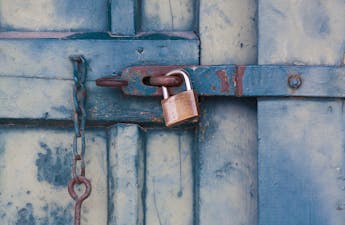Owners and landlords of residential rental property are required by law to provide for maintenance and upkeep of their properties. For example, in Seattle where I live, the city’s Housing and Building Maintenance Code (HBMC) mandates that building owners have a responsibility and obligation to provide safe, clean, secure living conditions. This article will discuss how regular property maintenance and inspections can help landlords ensure they keep their rental properties in compliance with local regulations.
Among other things, landlords and property owners should:
- Keep the premises fit for human habitation and keep any common areas reasonably clean and safe;
- Provide for control of insects, rodents and other pests; and
- Maintain all structural components (roof, walls and foundation) and keep the unit weathertight.
I’m sure other cities, towns and jurisdictions have similar requirements.
As part of a property maintenance routine, landlords and property owners should perform regular property maintenance inspections of the interior and exterior conditions of their investment property. Developing your own inspection checklist for rental property is vital to staying on top of maintenance.
Ideally, these routine inspections and any associated repairs would not be overly time consuming or costly to you as a property owner or landlord. However, neglecting these tasks and ignoring little issues could potentially lead to larger, more expensive problems, or even put you at risk of legal liability.
In this article, I will focus on exterior inspections and what to look out for. Click here for a discussion on regular interior and move-in/move-out inspections.
Rental Property Maintenance: Exterior Inspections
When assessing your property’s condition, make sure to take time to thoroughly inspect the exterior and grounds at regular intervals, such as every quarter, or at the changing of each season. Features that landlords and property owners need to take note of include:
- Gutters: watch for any sagging, dripping, or areas that may have come disconnected or low spots that have deteriorated and rotted through.
- Downspouts: make sure they are connected to the gutters and any underground drainage systems. If not connected to drainage, ensure that the water flows away from the building and does not collect near structures.
- Drainage: look for any signs of blockages or underground leakage. Check to make sure water flows away from the building and either into storm drains or other areas the moisture can be absorbed into the ground.
- Unusually wet or soggy areas: if an area is unusually soggy or damp, it may be due to blockage or leaks in underground drainage.
- Roof: look for any shingles that may have blown or fallen off, or any buckling or peeling in areas. If you cannot see much of the roof from ground level, you may have to call a professional roofer to inspect for you.
- Paint: inspect for any peeling or areas of cracking or buckling in the wood, especially on areas more exposed to wind and rain. Exposure to moisture may rot the siding, or worse, get behind it and cause mold or rot. Signs of cracking or buckling may also indicate water getting behind the siding from elsewhere. Pay particular attention to areas near roofs, balconies, decks, and areas near the ground.
- Lights, gates, fences, entrances: safety and security are an important part of regular maintenance inspections. Check for any signs of damage or tampering to ensure your tenants’ safety and security.
- Animal excrement or droppings: look for any signs of animal droppings for rodents or pests. Holes, tears or damage to crawlspace screens or fencing may indicate that small critters may be living under porches and decks. Unusual mounds near trees or bushes might be a sign of wasps or yellow jackets. And in some climates, standing water can be a breeding ground for mosquitoes or other insects.
In order to best check your property under a variety of weather conditions, I recommend inspections at least once every quarter. This way, you can see if your rental property has any problems due to rain, snow, heat, sun, or any other extreme weather conditions unique to your location.
The benefits of property maintenance are clear; happier tenants, fewer hassles, and lower expenses. Whether you are a new or first time landlord or an experienced investment property owner, my advice would be to build in regular exterior inspections into part of your seasonal and annual maintenance routine. We have developed a rental property maintenance checklist (link: https://landlordgurus.com/property-maintenance-and-inspections/ )you can use as a template, so that you have a comprehensive set of inspections and maintenance tasks you carry out as a regular routine.
If you notice anything out of the ordinary during your regular inspection, it may require further action or a call to a maintenance professional for expert advice and help.
Search for a handyman in your area:

Disclosure: Some of the links in this post are affiliate links and Landlord Gurus may earn a commission. Our mission remains to provide valuable resources and information that helps landlords manage their rental properties efficiently and profitably. We link to these companies and their products because of their quality, not because of the commission.




